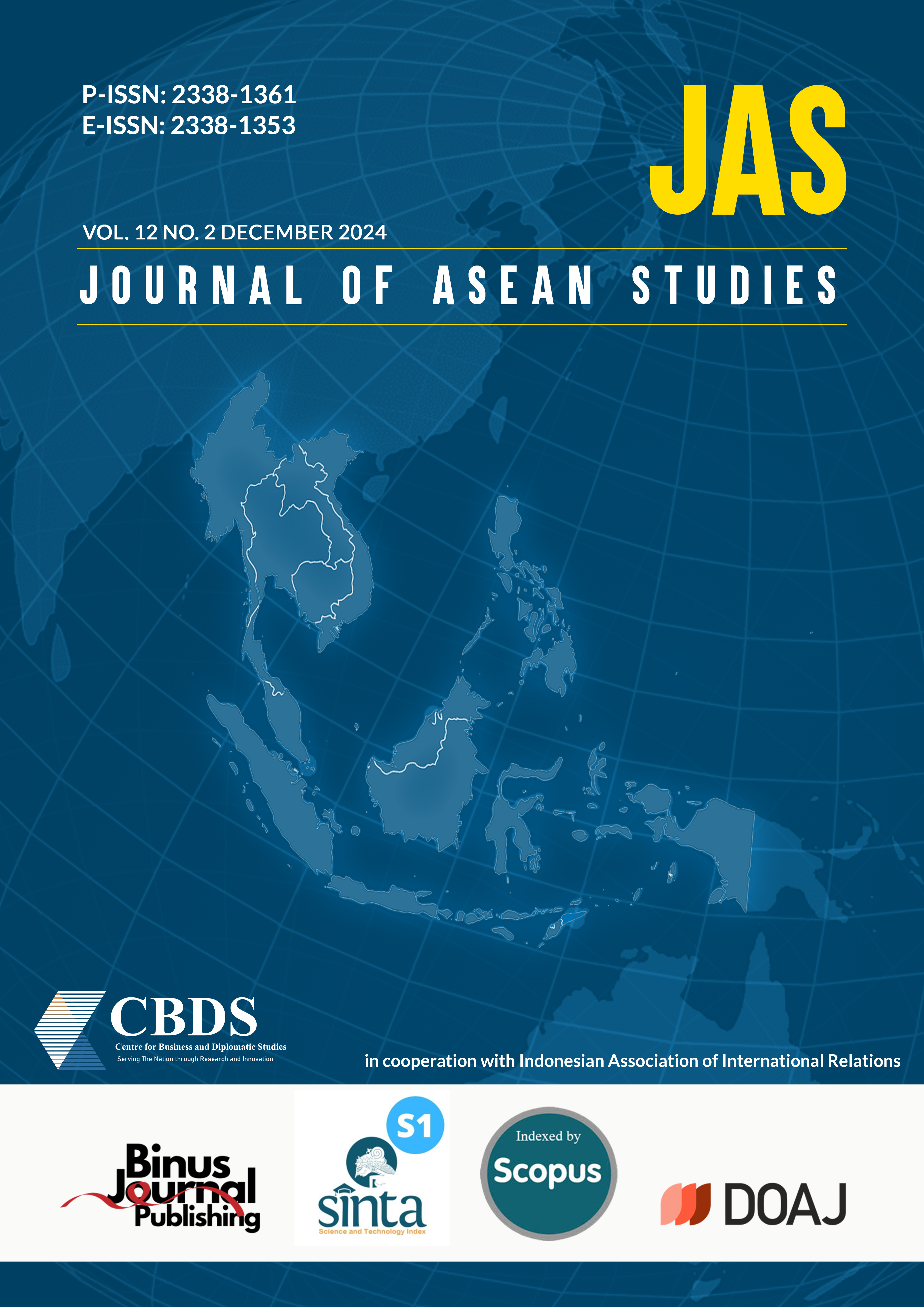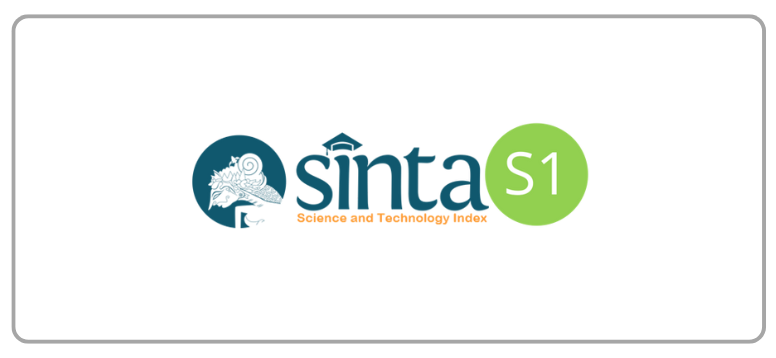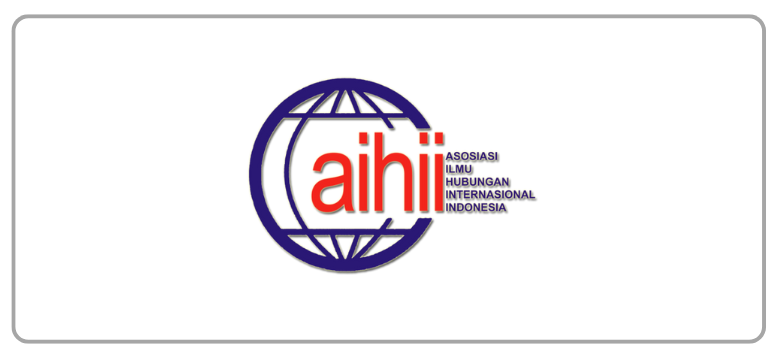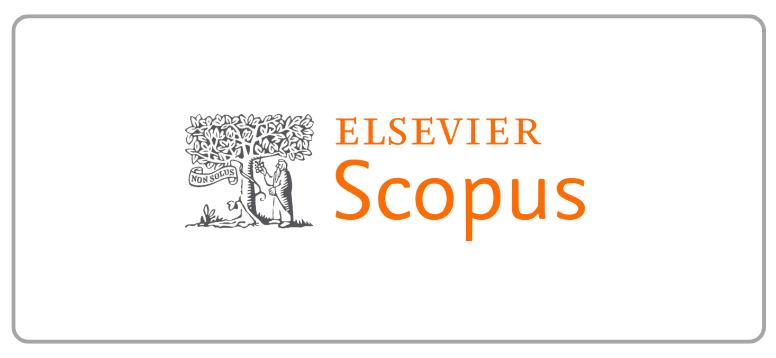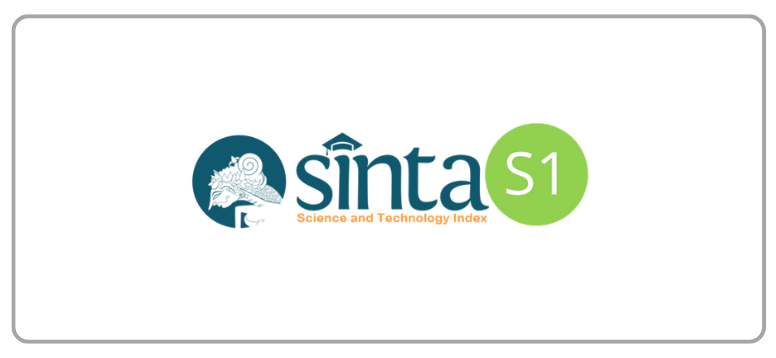Regional Identity and Lingua Franca in the ASEAN Region: A Comparative Study of Indonesian and Malay
DOI:
https://doi.org/10.21512/jas.v12i2.9582Keywords:
identity, ASEAN, Indonesian, Malay, lingua francaAbstract
Indonesian and Malay share a common ancestral origin. After being separated nearly a century ago, the trajectories of these two languages have diverged significantly. While Indonesian has experienced rapid growth, Malay has lagged. Amid discussions about establishing a lingua franca in the ASEAN region, both languages have been proposed as potential candidates. However, despite prolonged debate, progress in this direction has faced challenges. Neighboring Malay-speaking countries advocate for Malay as the ASEAN lingua franca, while Indonesia actively promotes Indonesian. This research aimed to examine the evolution of Malay in the Archipelago or ASEAN region while demonstrating why Indonesian is a more suitable candidate for lingua franca status than Malay. The research applied qualitative methods, specifically an integrative-critical review and a netnographic approach. The findings reveal that both language share roots in a 7th-century Southeast Asian lingua franca, which was later modernized during colonialism and played a pivotal role in regional trade. This shared historical legacy continues to influence the collective identity of ASEAN Linguistically, Indonesians have developed more complex markers than Malay, reflecting Indonesia’s dynamic sociocultural evolution. These features align with universal language principles, facilitating precise and efficient communication. Additionally, sociolinguistic and geopolitical advantages have bolstered Indonesia’s prominence, leading to its adoption in foreign education and UNESCO recognition. In contrast, Malay has not achieved comparable milestones.
References
Adam, S. D. B. S. (2014). Cabaran dan reaksi pelaksanaan bahasa kebangsaan dalam bidang pentadbiran dan pendidikan di Malaysia, 1957-1966. Procedia-Social and Behavioral Sciences, 134, 305-315. https://doi.org/10.1016/j.sbspro.2014.04.253
Adelaar, A., & Himmelmann, N. P. (Eds.) (2005). Austronesian languages of Asia and Madagascar. London and New York: Routledge.
Adelaar, K. A. (1992). Proto Malay: A reconstruction of its phonology and parts of its lexicon and morphology. Department of Linguistics, Research School of Pacific Studies, Australian National University.
Ahmad, H.M.A. (1986). Singapura dengan MABBIM. Sekata, 3(1), 38-41. The Malay Council.
Ahmad, M. T., & Zain, Z. M. (Eds.). (1988). Rekonstruksi dan cabang-cabang Bahasa Melayu induk. Dewan Bahasa dan Pustaka, Kementerian Pendidikan Malaysia.
Akova, S., & Kantar, G. (2021). Globalization in the context of multiculturalism and ethnicity in the Western Balkans and intercultural communication. Journal of Public Affairs, 21(2). https://doi.org/10.1002/pa.2185
Ali, A. S. S., & Alduagishi, S.S. A. (2024). The Islamic dimension in the national identity of the Malay. Global Journal Al-Thaqafah, 14(1), 209-222.
Amelia, N. (2024). Sociolinguistic Dimensions of English as a Lingua Franca: Power, Prestige, and Policy. Journal Pustaka Ilmu, 4(1), 1-20.
Andaya, L. Y. (2001). The search for the 'origin' of the Malay. Journal of Southeast Asian Studies, 32(3), 315-330. https://doi.org/10.1017/S0022463401000169
Anderson, B. (1966). The languages of Indonesian politics. Indonesia, 1, 89-116.
Anderson, B. (2001). Imagined communities: Komunitas-komunitas terbayang. INSISTPress and Pustaka Pelajar.
Arowsmith, John. (1863). Asiatic, or Eastern Archipelago, 1863. ANU Asia-Pacific Map Collection. https://jstor.org/stable/community.32800089
Ayuso-DÃaz, A. (2022). Natural trading partners versus empires in East and Southeast Asia regional integration (1840-1938). Journal of the Japanese and International Economies, 63. https://doi.org/10.1016/j.jjie.2021.101184
Banister, D. J., & Van Wee, B. (2015). How to write a literature review paper. Transport Reviews, 36(2), 278–288. https://doi.org/10.1080/01441647.2015.1065456
Blust, R. (1988). Historical Malay Linguistics: A Progress Report. Dewan Bahasa dan Pustaka, Ministry of Education Malaysia.
Brown, K. & Miller, J. (2013). The Cambridge dictionary of language. Cambridge University Press.
Burhani, R. (2014, June 18). Bahasa Indonesia ditargetkan jadi bahasa internasional ke-7. Antara News. https://www.antaranews.com/berita/439728/bahasa-indonesia-ditargetkan-jadi-bahasa-internasional-ke-7
Canga, L. Ã. (2019). Conflicts regarding official status of languages in Spain. In A. M. Ocaña (Ed.), Clashing wor(l) ds: From international to intrapersonal conflict (pp. 67-81). Brill. https://doi.org/10.1163/9781848883642_007
Chaer, A. (2007). Leksikologi & leksikografi Indonesia. Rineka Cipta.
Citaku, M. (2024). Turk character in the legendary Albanian songs named the songs of the frontier warriors. Milli Folklor, 18(142), 76-85. https://doi.org/‌10.58242/ ‌‌millifolklor.1160485
Clynes, A. & Deterding, D. (2011). Standard Malay (Brunei). Journal of the International Phonetic Association, 41(2), 259-268. https://doi.org/10.1017/S002510031100017X
Collins, J. T. (2005). Bahasa Melayu, Bahasa Dunia: Sejarah Singkat. Yayasan Obor Indonesia.
Collins, J. T. (2017). Malay identity in Southeast Asia: Understanding the cultural and linguistic phenomena. Advanced Science Letters, 23(10), 9932–934. https://doi.org‌/ ‌‌10.1166/asl.2017.10345
Coluzzi, P. (2017). Language planning for Malay in Malaysia: A case of failure or success. International Journal of the Sociology of Language, 2017(244), 17-38. https://‌‌‌doi.org‌‌/ ‌‌‌‌10.1515‌/‌ijsl-2016-0055
Crystal, D. (2003). English as a Global Language (2nd ed). Cambridge University Press.
Curaming, R. (2022). Enrique de Malacca/Maluku: Another chapter in the Indonesia–Malaysia heritage war? TRaNS Trans -Regional And -National Studies of Southeast Asia, 11(1), 1–15. https://doi.org/10.1017/trn.2022.10
Damshäuser, B. (2017). Dialog Sunyi: Bahasa dan Sastra Indonesia dalam Konteks Global. In Sukatman, A. Muti’ah, & A. Taufig (Eds.), Prosiding Seminar Nasional Bahasa dan Sastra Indonesia dalam Konteks Global. Program Studi Pendidikan Bahasa dan Sastra Indonesia, Fakultas Keguruan dan Ilmu Pendidikan, Universitas Jember.
Dardjowidjojo, S. (1998). Strategies for a successful national language policy: the case of Indonesia. International Journal of the Sociology of Language, 130(1), 35-48. https://doi.org/10.1515/ijsl.1998.130.35
Denzin, N. K. & Lincoln, Y. S. (2009). Handbook of qualitative research. Pustaka Pelajar.
Dollah, R., Maraining, A., Jafar, A., Joko, E. P., & Sakke, N. (2024). Exploring the interdependence model in Malaysia-Indonesia relations: Insights from Sabah, Malaysia. Intellectual Discourse, 32(1). https://doi.org/10.31436/id.v32i1.1943
Echols, J. M. (1978). Dictionary of Presidential Speeches and Dictionary Making: Malay and Indonesian. The Journal of Asian Studies, 38(1), 11-24. https://doi.org/10.2307/2054235
Embong, A. M., Jusoh, J. S., Hussein, J., & Mohammad, R. (2016). Tracing the Malays in the land of Malays. Procedia-Social and Behavioral Sciences, 219, 235-240. https://doi.org/10.1016/j.sbspro.2016.05.011
Enfield, N. J. (2019). Mainland Southeast Asian Language - A concise typological introduction. Cambridge University Press.
Errington, J. J. (1986). Continuity and change in the development of Indonesian. The Journal of Asian Studies, 45(2), 329-353. https://doi.org/10.2307/2055846
Errington, J. J. (2008). Linguistics in the Colonial world: A story of language, meaning and power. Blackwell Publishing.
Ethnologue. (n.d.). Vietnamese. In Ethnologue.com, from https://www.ethnologue.com/ subgroup/3008/
European Commission. (2011). Lingua Franca: Chimera or Reality?. Publications Office
Fahlevi, F. (2022). Mendikbudristek Nadiem Tolak Usul Malaysia Jadikan Bahasa Melayu Jadi Bahasa Resmi ASEAN. Tribun News. https://m.tribunnews.com/nasional/2022/04/04/ mendikbudristek-nadiem-tolak-usul-malaysia-jadikan-bahasa-melayu-jadi-bahasa-resmi-asean?page=all#goog_rewarded
Fenton, A., & Parry, K. D. (2022). Netnography-an approach to ethnography in the digital age. In L. Sloan, & A. Quan-Haase (Eds.), SAGE Handbook of Social Media Research Methods pp. 214-227). SAGE.
Gau, S. (2011). Menjejaki bahasa Melayu Maluku di Papua: Kerangka pengenalan. Jurnal Elektronik Jabatan Bahasa dan Kebudayaan Melayu, 3, 21-40.
Gil, D. (2024). Borrowing within Malayic; The role of exotericity. Wacana, Journal of the Humanities of Indonesia, 25(3). https://doi.org/10.17510/wacana.v25i3.1793
Gil, J. (2022. How does a language become global. In J. Gil, & S. Marsen (Eds.), Exploring Language in Global Context (pp. 95-109). Routledge.
Goebel, Z. (2002). When do Indonesians speak Indonesian? Some evidence from interethnic and Foreign-Indonesian interactions and its pedagogical implications. Journal of Multilingual and Multicultural Development, 23(6), 479-489. https://doi.org/10.1080/ 01434630208666481
Goode, C. (2020). English language in Brunei: Use, policy, and status in education–A review. Indonesian JELT: Indonesian Journal of English Language Teaching, 15(1), 21-46. https://doi.org/10.25170/ijelt.v15i1.1411
Greenberg, R. D. (2004). Language and identity in the Balkans: Serbo-Croatian and its disintegration. Oxford University Press. https://doi.org/10.1093/acprof:oso/9780199208753.001. 0001
Grehenson. G. (2022, May 23) Penutur Bahasa Indonesia Capai 300 Juta Jiwa. Universitas Gadjah Mada. https://ugm.ac.id/id/berita/22527-penutur-bahasa-indonesia-capai-300-juta-jiwa
Grimes, C. E. (1996). Indonesian-the official language of a multilingual nation. In S. Wurm, P. Mühlhäusler & D. Tryon (Eds.), Atlas of Languages of Intercultural Communication in the Pacific, Asia, and the Americas (pp. 719-728). De Gruyter Mouton. https://doi.org/ 10.1515/9783110819724.2.719
Groeneboer, K. (1999). Politik bahasa pada masa Hindia Belanda. Wacana, Journal of the Humanities of Indonesia, 1(1), 32-48. https://doi.org/10.17510/wacana.v1i1.279
Guan, L. H., & Suryadinata, L. (Eds.). (2007). Language, nation, and development in Southeast Asia. Institute of Southeast Asian Studies.
Guepedia. (2016, January 15). Bahasa Indonesia Terpilih sebagai Bahasa Pemersatu ASEAN. Kompasiana. https://www.kompasiana.com/guepedia/569874d5f09273a5050a9650/
Hamzah, Z. & Azma, Z. (2017). Bahasa Melayu sebagai Bahasa Asean: Antara realiti dengan hambatan. MAHAWANGSA, 4 (1), 99-108.
Hardini, T. I., Yulianeta, Fikrianto, M., Hamidah, H., Emilia, E., & Kharismawati, L. R. S. (2023). ASEAN students’ interest in learning the Indonesian language: A descriptive study from the perspective of SEAMEO ASEAN. International Journal of Language Education, 7(4), 746-762. https://doi.org/10.26858/ijole.v7i4.59491
Harun, K. (2009). Latin influence in early Malay grammar. Jurnal Melayu, 4, 1-10.
Harun, K., Ismail, K., Wahid, L. A., Ismail, Z., & Sabil, A. M. (2018). Membangun kerangka standard bahasa Melayu dan bahasa Indonesia. Jurnal Melayu, 17(2).
Harwati, L. N. (2012). Will English coexist with Indonesian. Asian EFL Journal Professional Teaching Articles (Special CEBU Issue), 61, 41-51.
Herminingsih, D.I & Jazeri, M. (2020). Elevating the Speaking Ability through a Culture Talk in a Video: Evidence from Universitas Tulungagung, Indonesia. Asian ESP Journal, 16(5.2), 191-203.
Hoogervorst, T. G. (2018). Utterance-final particles in Klang Valley Malay. Wacana, Journal of the Humanities of Indonesia, 19(2), 291-326. https://doi.org/10.17510/wacana.v19i2.704
Hoogervorst, T. G. (2024). Seventeenth-century Malay wordlists and their potential for etymological scholarship. Wacana, Journal of the Humanities of Indonesia, 25(3), 7. https://doi.org/10.17510/wacana.v25i3.1782
Hranova, A. (2002). Language: Borders, identities and utopias: Balkan cases. New Europe College Yearbook, 10, 213-254.
Humas Seketariat Kabinet Republik Indonesia. (2019, October 19). Bahasa Indonesia resmi jadi bahasa kedua di Universitas Al Azhar Mesir. Seketariat Kabinet Republik Indonesia. https://setkab.go.id/bahasa-indonesia-resmi-jadi-bahasa-kedua-di-universitas-al-azhar-mesir/
Jazeri, M., & Maulida, S. Z. (2018). Hambatan dan harapan pemartabatan Bahasa Indonesia. Indonesian Language and Education Literature, 4(1), 52-61. https://doi.org/10.24235/ ileal.v4i1.2493
Jordan, P. (2019). Languages and space-related identity: The rise and fall of Serbo-Croatian. In: S. Brunn, R. Kehrein (Eds.), Handbook of the Changing World Language Map (pp. 541-561). Springer. https://doi.org/10.1007/978-3-030-02438-3_47
Kadir, N. (2024). Resolving the conflicts between the Philippines and Malaysia: Mediation on the Sabah dispute and its impact on socio-economic cooperation (1986-1998). Journal of International Studies, 20(2), 119-147. https://doi.org/10.32890/jis2024.20.2.5
Kirkpatrick, A. (2010). English as a Lingua Franca in ASEAN: A Multilingual Model. Hong Kong University Press.
Kozinets, R. V. (2010). Netnography: Conducting Ethnographic Research Online. SAGE publication.
Kridalaksana, H. (1988). Methodological Issues in the Reconstruction of "Ancient Malay". Reconstruction and the Branches of Primary Malay. Kuala Lumpur: Dewan Bahasa dan Pustaka, Ministry of Education Malaysia.
Kullanda, S. (2006). NushÄntara or java?: the acquisition of the name. Indonesia and the Malay World, 34(98), 91–98. https://doi.org/10.1080/13639810600652386
Kurniawan, D. (2019, November 7). Ilmuwan Nusantara Sepakat Pakai Bahasa Indonesia sebagai Bahasa Ilmiah Internasional. Liputan 6. https://www.liputan6.com/surabaya/read/ 4104986/ilmuwan-nusantara-sepakat-pakai-bahasa-indonesia-sebagai-bahasa-ilmiah-internasional
Lahitani, S. (2015, January 5). 8 Warisan Budaya Indonesia yang Pernah Diklaim Malaysia. Liputan 6. https://www.liputan6.com/citizen6/read/2156339/8-warisan-budaya-indonesia-yang-pernah-diklaim-malaysia.
Lauder, A. (2008). The status and function of English in Indonesia: A review of key factors. Makara Human Behavior Studies in Asia, 12(1), 9-20. https://doi.org/10.7454/mssh. v12i1.128
Law Number 24 of 2009 on the internationalization of the Indonesian.
Lee, H. Y., Hamid, M. O., & Hardy, I. (2022). Problematising ASEAN language policy: Is the ASEAN way the only way?. Language Problems and language planning, 46(1), 55-77. https://doi.org/10.1075/lplp.21044.lee
Lee, H. Y., Hamid, M. O., & Hardy, I. (2023). English and regional identity in ASEAN. World Englishes, 42(2), 239-253. https://doi.org/10.1111/weng.12571
Linehan, W. (1949). The earliest word-lists and dictionaries of the Malay Language. Journal of the Malayan Branch of the Royal Asiatic Society, 22(1), 183-187.
Lowenberg, P. (1985). Malay in Indonesia, Malaysia and Singapore: Three Faces of a National Language. U.S. Department of America.
Maharam, M. E. (2021). Transnational cultures of Malaysian, Indonesian, Singaporean, and Philippine national cinema. Transnational Screens, 12(2), 134–149. https://doi.org/ 10.1080/25785273.2021.1962065
Mahayana, M.S. (2010). Akar Melayu: Ideologi dalam sastra. Bukupop.
Mahdi, W. (2018). The first standard grammar of Malay: George Werndly's 1736 Maleische spraakkunst. Wacana, Journal of the Humanities of Indonesia, 19(2), 257-290. https://doi.org/10.17510/wacana.v19i2.644
Mahsun. (2017). Metode Penelitian Bahasa: Tahapan, Strategi, Metode, dan Tekniknya. Rajawali Press.
Mahsun. (2010). Genolinguistk: Kolaborasi Linguistik dengan Genetika dalam Pengelompokan Bahasa dan Populasi Penuturny. Pustaka Wacana.
Masinambow, E.K.M., & Paul, H. (2002). Bahasa Indonesia dan Bahasa Daerah. Yayasan Obor Indonesia.
Maxwell, W. E. (1907). A Manual of the Malay Language. 8th Edn. Dodo Press.
McLellan, J. (2020). Brunei English. In K. Bolton, W. Botha, A. Kirkpatrick (Eds.), The handbook of Asian Englishes (pp. 399-418). John Wiley & Sons, Inc.
Mee, R. (1929). An Old Malay Dictionary. Journal of the Malayan Branch of the Royal Asiatic Society, 7(2), 316-326).
Meirina, Z. (2014, August 8). Brunei klaim 62.000 kosa kata Bahasa Indonesia. Antara. https://www.antaranews.com/berita/447599/brunei-klaim-62000-kosa-kata-bahasa-indonesia
Mintz, M.W. (1994). A Student's Grammar of Malay & Indonesian. EPB Publishers.
Mohtar, O. (2023, December 21). Kamboja dan Thailand dalam Pusaran Sengketa Kuil Preah Vihear. https://tirto.id/kamboja-dan-thailand-dalam-pusaran-sengketa-kuil-preah-vihear-gTlg.
Morve, R. K., Wen, X., & Mansour, N. (2023). The role of English and the sociocultural structure of Bahasa: a study of Brunei Darussalam. Asian-Pacific Journal of Second and Foreign Language Education, 8(1), 14. https://doi.org/10.1186/s40862-023-00186-5
Muhammad, D. (2011, May 6). Bahasa Indonesia Jadi Bahasa ASEAN?. Republika. http://www.republika.co.id/berita/internasional/global/11/05/06/lks73o-bahasa-indonesia-jadi-bahasa-asean.
Müller, M. (2014). Manufacturing Malayness: British debates on the Malay nation, civilisation, race and language in the early nineteenth century. Indonesia and the Malay World, 42(123), 170-196. https://doi.org/10.1080/13639811.2014.912409
Murtisari, E. T., & Mali, Y. C. G. (2017). Impact of English on the Indonesian Language and culture: High school students’ perceptions. Studies about Language, 30, 90-104. https://doi.org/10.5755/j01.sal.0.30.17570
Muslich, M. (2010). Bahasa Indonesia pada era globalisasi: Kedudukan, fungsi, pembinaan, dan pengembangan. Bumi Aksara.
Muslich, M., & Oka, I. G. N. (2010). Perencanaan bahasa pada era globalisasi. Bumi Aksara.
Nabilla, F. (2022, June 23). 5 Daerah di Indonesia yang Pernah Diklaim Malaysia. Suara.com. https://www.suara.com/news/2022/06/24/104548/5-daerah-di-indonesia-yang-pernah-diklaim-malaysia?page=3.
Nguyen, L.T.T & Chon, Y.V. (2020). Ideologies of English and English Language Teaching in Facebook Advertisements of Vietnamese Private Language Institutions. Asian EFL Journal. 24(5), 6-37.
Ningrum, R. K., Waluyo, H. J., & Winarni, R. (2017). BIPA (Bahasa Indonesia Penutur Asing) sebagai upaya internasionalisasi universitas di Indonesia. The 1st Education and Language International Conference Proceedings Center for International Language Development of Unissula, Indonesia, 726-732.
Nothofer, B. (2006). Malay. In K. Brown (Ed.), Encyclopedia of Language & Linguistics (pp. 450-453). Elsevier. https://doi.org/10.1016/B0-08-044854-2/02130-1
Nugroho, R. (1957). The Origin and Development of Bahasa Indonesia. PMLA/Publications of the Modern Language Association of America, 72(2), 23-28. https://doi.org/10.2307/ 2699135
Oetomo, D. (1991). The Chinese of Indonesia and the development of the Indonesian language. Indonesia, 53-66. Retrieved from https://doi.org/10.2307/3351254
Omar, A.H. (2020). A Typology of the Spread of Malay. Asian Linguistic Anthropology, 2(4) 28-48. https://doi.org/10.47298/jala.v2-i4-a2
Omar, A. H. (1998). Language planning and image building: the case of Malay in Malaysia. International Journal of Sociology of Language, 130(1), 49-66. https://doi.org/10.1515/ ijsl.1998.130.49
Omar, A. H. (1971). Standard language and the standardization of Malay. Anthropological Linguistics, 13(2), 75-89.
Othman, Z. (2023). English Malay Maritime Words in the Malay Seas. 3L: Language, Linguistics, Literature, 29(4). https://doi.org/10.17576/3L-2023-2904-01
Paauw, S. H. (2008). The Malay Contact Varieties of Eastern Indonesia [Doctoral Dissertation, The State University of New York at Buffalo]
Pakir, A. (2010). English as a lingua franca: Negotiating Singapore’s English language education. In L. Lim, A. Pakir, & L. Wee (Eds), English in Singapore: Modernity and management (pp. 261-279). Hong Kong Scholarship Online.
Paterson, H. S. (1924). An early Malay Inscription from Trengganu. Journal of the Malayan Branch of the Royal Asiatic Society, 2(3), 252-258.
Payne, Edward M.F. (1964). Basic syntactic structures in Standard Malay [PhD Thesis, SOAS University of London]. https://doi.org/10.25501/SOAS.00029124
Pennycook, A. (2011). Global Englishes. In R. Wodak, B. Johnstone, & P. Kerswill (Eds.), The SAGE handbook of sociolinguistics. SAGE Publications.
Phillips, N. (1973). Differences between Bahasa Indonesia and Bahasa Malaysia. Indonesian Circle. School of Oriental & African Studies. Newsletter, 1(2), 7-9. https://doi.org/ 10.1080/03062847308723526
Plantak, M., & Paleviq, E. (2022). "Banal Balkanism?" - Rethinking Banal Nationalism and regional identity in the Post-Yugoslav media space. Journal on Ethnopolitics and Minority Issues in Europe, 21(1), 1-22.
Poedjosoedarmo, S. (2006). Perubahan tata bahasa: penyebab, proses, dan akibatnya. Pidato Pengukuhan Guru Besar Fakultas Sastra Universitas Sanata Dharma. Yogyakarta
Poedjosoedarmo, S. (2005a). Language Change: Interactions between Grammatical Components. Phenomena: Journal of Language and Literature, 9 (1), 1-20.
Poedjosoedarmo, S. (2005b). Teori tata bahasa universal. Kajian Linguistik dan Sastra, 17(2), 109-122.
Poedjosoedarmo, S. (2004). Language development and grammatical principles. Review of Linguistics and Literature, 16 (31), 80-88.
Poedjosoedarmo, S. (2000a). Syntactic change in Malay. Phenomena: Journal of Language and Literature, 4(1), 1-15.
Poedjosoedarmo, S. (2000b). The order of noun phrases and syntax. Humanity, 1(2), 951-112.
Poedjosoedarmo, S. (2000c). Pengaruh urutan frasa pada perwujudan frasa dan kata. Jurnal Pendidikan Humaniora , 1(2), 117-127.
Poedjosoedarmo, S. (1996). Personal pronouns and focus in Brunai Malay: Austronesian dialects in the Archipelago. Proceedings of an International Seminar. Jabatan Bahasa Melayu Fakulti Sastra dan Sains Sosial Universitas Brunai Darussalam.
Presidential Regulation No. 20/2018 on the Use of Foreign Workers (2018)
Presidential Regulation No. 63/2019 on the Use of Indonesia (2019)
Putra, I. P., & Afrizal. (2016). Politik luar negeri Indonesia terhadap Malaysia dalam mempertahankan kepemilikan terhadap blok Ambalat pasca konflik pulau Sipadan dan Ligitan tahun 2012-2105. Jurnal Online Mahasiswa Fakultas Ilmu Sosial dan Politik, 3(2), 1-16.
Putten, J. V. D. (2011). Riau: A Malay Heart on the Border. In M. Mohamad, & S. M. K. Aljunied (Eds.), Melayu: the politics, poetics and paradoxes of Malayness (pp. 219-240). NUS Press.
Raharjo, S. N. I. (2011, August 2). ASEAN dan sengketa kawasan. Kompas. https://nasional.kompas.com/read/2011/08/02/04414029/asean.dan.sengketa.kawasan?page=all
Rappa, A.L., & Wee, L. (2006). Language policy and modernity in Southeast Asia: Malaysia, the Philippines, Singapore, and Thailand. Springer.
Reditya, T. H. (2022, June 21). Mahathir: Malaysia harus klaim Kepulauan Riau dan Singapura. Kompas. https://www.kompas.com/global/read/2022/06/21/130000970/ mahathir--malaysia-harus-klaim-kepulauan-riau-dan-singapura?page=all.
Ricci, R. (2013). The Malay World, Expanded: The world's first Malay newspaper, Colombo, 1869. Indonesia and the Malay World, 41(120), 168-182. https://doi.org/10.1080/ 13639811.2013.794527
Rochmawati, I., Rusdiono, R., & Arifin, A. (2022).The Involvement and Conflict of Authority of Actors Managing the East Indonesia-Malaysia Border Area. Journal of Government Science, 7(3).
Rohimah, D. F. (2018). Internasionalisasi bahasa Indonesia dan internalisasi budaya Indonesia melalui bahasa Indonesia bagi penutur asing (BIPA). AN-NAS: Jurnal Humaniora, 2(2), 199-212. https://doi.org/10.36840/an-nas.v2i2.104
Rozan, M. Z. A., & Yoshiki, M. (2007) Orthographic reform of standard Malay online: Towards better pronunciation and cross-linguistic environment building. Journal of Universal Language, 8(1), 129-159. https://doi.org/10.22425/jul.2007.8.1.129
Safari, Amrulloh, M. A., & Musadad, A. N. (2024). Renarrating the Islamisation of the Malay-Indonesian archipelago in 13th-19th centuries. Jurnal Ilmiah Islam Futura, 24(2), 304-328. https://doi.org/10.22373/jiif.v24i2.24843
Salamah, S., et al., (2018). Pengembangan bahasa Indonesia melalui diplomasi kebahasaan di luar negeri: sebuah pengamatan awal. Diglosia : Jurnal Pendidikan, Kebahasaan, dan Kesusastraan Indonesia, 2(2). 85-92.
Samuel, J. (2008). Kasus Ajaib Bahasa Indonesia?: Pemodernan Kosakata dan Politik Peristilahan. KPG (Kepustakaan Populer Gramedia).
Schneider, E. W. (2013). Leisure-activity ESP as a special case of ELF: the example of scuba diving English. English Today, 29(3), 47-57. https://doi.org/10.1017/S026607841 300031X
Scott, C. P. G. (1896). The Malayan words in English. Journal of the American Oriental Society, 17, 93-144. https://doi.org/10.2307/592501
Selo, A., et al. (2015). Media dan khalayak: Pemberitaan isu konflik Malaysia dan Indonesia. Jurnal Komunikasi: Malaysian Journal of Communication, 31(2,) 15-32.
Sharbawi, S. (2020). An English-centric monolingual Brunei? Predictions and reality. Asian Englishes, 22(3), 257–281. https://doi.org/10.1080/13488678.2019.1709335
Skendi, S. (1975). Language as a factor of national identity in the Balkans of the nineteenth century. Proceedings of the American Philosophical Society, 119(2), 186-189.
Smakman, D. (2018). Discovering sociolinguistics. Palgrave Macmillan.
Sneddon, J. N. (2003). The Indonesian: Its history and role in modern society. UNSW Press.
Snyder, H. (2019). Literature review as a research methodology: Overview and guidelines. Journal of Business Research, 104, 333-339. https://doi.org/10.1016/j.jbusres.2019. 07.039
Sokol, A. E. (1948). Communication and production in Indonesian history. The Far Eastern Quarterly, 7(4), 339-353. https://doi.org/10.2307/2049724
Solikhah, I., & Budiharso, T. (2020). Standardizing BIPA as an international program in language policy. The Asian ESP Journal, 16(5.2), 181-205.
Soriente, A. (2024). Cross-cultural encounters of Italian travellers in the Malay world; A perspective on the languages spoken by the local populations. Wacana, Journal of the Humanities of Indonesia, 25(2). https://doi.org/10.17510/wacana.v25i2.1679
Statista (2020). Number of social network users in some countries in 2020 and 2025
Steinhauer, H. (1980). On the history of the Indonesian. Studies in Slavic and General Linguistics, 1, 349-375.
Stevany, R. (2024, July 28). Indonesia pengguna X atau Twitter terbanyak keempat di dunia. Radio Republik Indonesia. https://www.rri.co.id/biak/lain-lain/859350/indonesia-pengguna-x-atau-twitter-terbanyak-keempat-di-dunia
Sugono, D. (2017). Bahasa Indonesia menuju bahasa internasional. Fon: Jurnal Pendidikan Bahasa dan Sastar Indonesia, 11(2). https://doi.org/10.25134/fjpbsi.v11i2.722
Sukatman, Muti’ah, A., Taufig, A., Dafik (Eds.). (2017). Prosiding seminar nasional bahasa dan sastra Indonesia dalam konteks global. Program Studi Pendidikan Bahasa dan Sastra Indonesia, Fakultas Keguruan dan Ilmu Pendidikan, Universitas Jember.
Sylado, R. 2002. Esei-Esei Bentara. Kompas.
Tiawati, R.L. (2015). Bahasa Indonesia di Thailand menjadi media diplomasi kebahasaan dan budaya di ASEAN melalui pengajaran BIPA. Jurnal Gramatika: Jurnal Penelitian Pendidikan Bahasa dan Sastra Indonesia, 1(1), 29-44.
Van der Tuuk, H. N. (1865). On the existing dictionary of Malay. Journal of the Royal Asiatic Society of Great Britain and Ireland, 1(1/2), 181-186.
Weintraub, A. N. (2013). [Review of the book Southeast Asia. Melayu: The politics, poetics and paradoxes of Malayness, edited by Maznah Mohamad and Syed Muhd Khairudin Aljunied]. Journal of Southeast Asian Studies, 44, 526-529 https://doi.org/10.1017/ S0022463413000428
Woolard, K. (2005). Language and identity choice in Catalonia: The interplay of contrasting ideologies of linguistic authority. https://escholarship.org/uc/item/47n938cp
Yang, S. (2008). Bahasa Indonesia dan bahasa Korea: Dua Model Menuju Bahasa internasional. Southeast Asia Journal, 18(1), 3-26.
Zulfikar, A. (2019, October 28-31). Bahasa Indonesia sebagai embrio bahasa ASEAN: Peluang dan tantangan menuju ASEAN community 2015 [Congress presentation]. Kongres Bahasa Indonesia X, Jakarta, Indonesia.
Downloads
Published
How to Cite
Issue
Section
License
Copyright (c) 2024 Ahmad Sirulhaq, Muh Ardian Kurniawan

This work is licensed under a Creative Commons Attribution-NonCommercial 4.0 International License.
